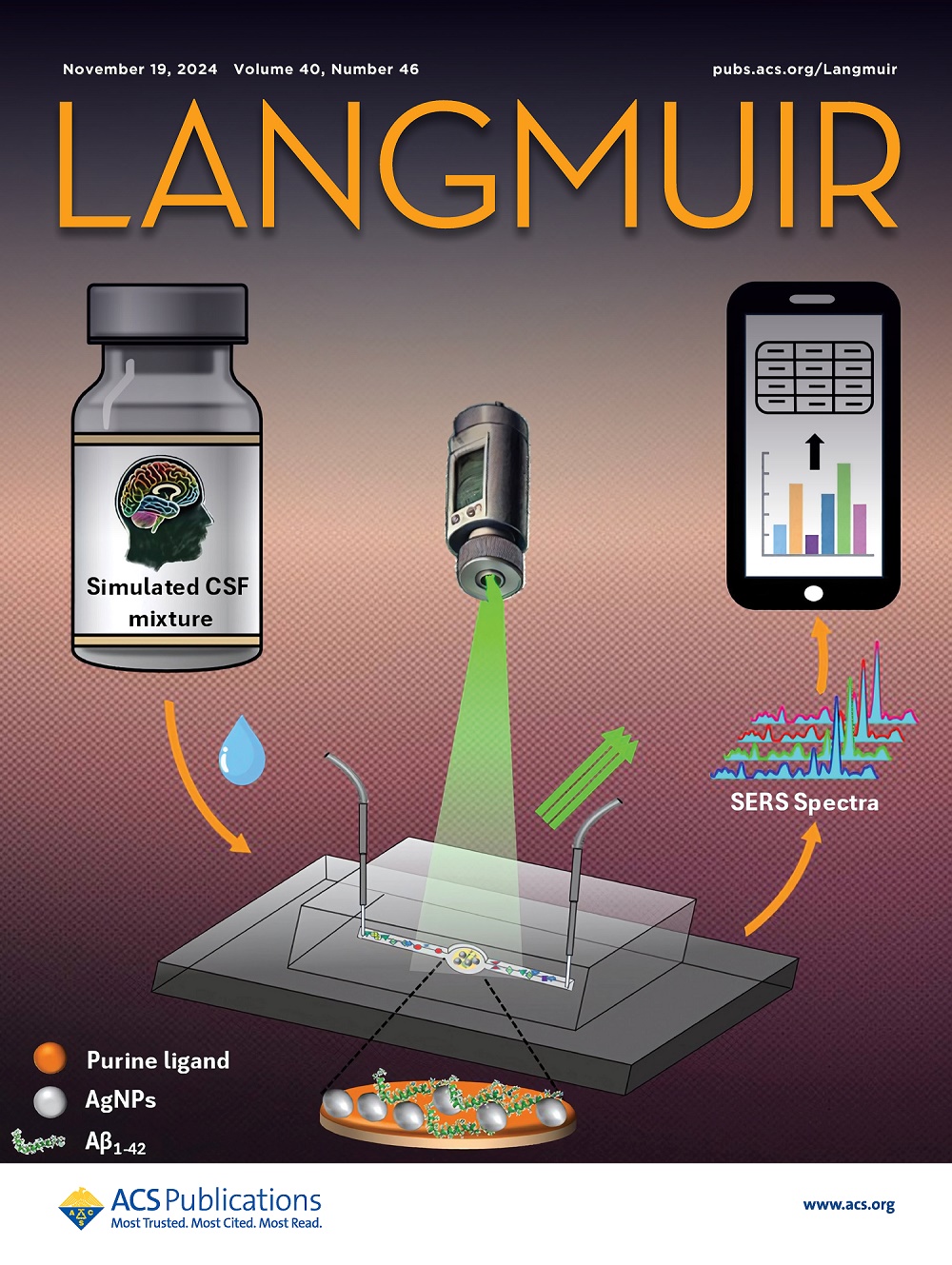Relaxation of the Adsorbed Material and Shadowing Effects on the Shape and Size of Electrodeposited Dendrites
IF 3.7
2区 化学
Q2 CHEMISTRY, MULTIDISCIPLINARY
引用次数: 0
Abstract
Materials with dendritic morphologies exhibit large surface areas that improve the catalytic, optical, and wetting properties but have ambiguous effects in batteries, so modeling their growth may help find the best operation conditions in each case. Kinetic Monte Carlo simulations are used here to study a metal electrodeposition model that represents the interplay between diffusive cation flux in the electrolyte and surface diffusion of adsorbed atoms (adatoms) with electrodes perpendicular to the gradient of the electrolyte concentration and different crystallographic orientations. In FCC lattices, dendrites with a pine tree shape are formed for all orientations, with dominant (111) surfaces and with trunks propagating in [001] and equivalent directions. However, with (110) and (111) substrates, secondary branches do not grow because the inclined primary branches block the cation flux (shadowing effect), so the dendrites may have a leaf-like shape. Some morphologies obtained here resemble those of the silver and gold electrodeposits. The extension to electrodeposition of HCP crystals with (0001) substrates shows the formation of leaf-like dendrites with a hexagonal symmetry. In both lattices, hierarchically organized structures appear for model parameters that warrant large diffusion lengths of adsorbed atoms on flat planes (typically coordination numbers n ≤ 4) and their stability at low-energy configurations (n ≥ 7). Average dendrite widths scale approximately with the diffusion length from adsorption to permanent incorporation to the crystal. These results show that dendrite widths are directly related to the relaxation of the electrodeposited material, and their crystallography is controlled by the energetics of the relaxation, but their visual appearance may depend on their angles with the electrode. In the range of model parameters where the coordination number weakly affects the diffusion of adsorbed atoms, the dendrites become rounded and have flower-like shapes. Possible effects of the orientation on the physicochemical properties of thin dendritic films are discussed.

吸附材料的松弛和遮蔽对电沉积枝晶形状和尺寸的影响
具有枝晶形态的材料具有较大的表面积,可以改善催化、光学和润湿性能,但对电池的影响不明确,因此对其生长进行建模可能有助于找到每种情况下的最佳操作条件。本文采用动力学蒙特卡罗模拟方法研究了一种金属电沉积模型,该模型用垂直于电解质浓度梯度和不同晶体取向的电极表征了电解质中扩散阳离子通量与吸附原子(adatoms)表面扩散之间的相互作用。在FCC晶格中,所有方向都形成了松树形状的树突,具有优势(111)表面,树干沿[001]和等效方向传播。然而,对于(110)和(111)基质,二次枝不能生长,因为倾斜的一次枝阻挡了阳离子通量(遮蔽效应),因此树突可能具有叶状形状。这里得到的一些形貌类似于银和金的镀层。在(0001)衬底上电沉积HCP晶体显示出具有六边形对称的叶状树突的形成。在这两个晶格中,有层次组织的结构出现在模型参数中,这些参数保证了吸附原子在平面上的大扩散长度(通常配位数n≤4)及其在低能构型下的稳定性(n≥7)。平均枝晶宽度大致与从吸附到永久结合到晶体的扩散长度成比例。这些结果表明,枝晶宽度与电沉积材料的弛豫直接相关,其晶体学受弛豫的能量学控制,但其视觉外观可能取决于它们与电极的角度。在配位数对吸附原子扩散影响较弱的模型参数范围内,枝晶呈圆形,呈花状。讨论了取向对树枝晶薄膜物理化学性质的可能影响。
本文章由计算机程序翻译,如有差异,请以英文原文为准。
求助全文
约1分钟内获得全文
求助全文
来源期刊

Langmuir
化学-材料科学:综合
CiteScore
6.50
自引率
10.30%
发文量
1464
审稿时长
2.1 months
期刊介绍:
Langmuir is an interdisciplinary journal publishing articles in the following subject categories:
Colloids: surfactants and self-assembly, dispersions, emulsions, foams
Interfaces: adsorption, reactions, films, forces
Biological Interfaces: biocolloids, biomolecular and biomimetic materials
Materials: nano- and mesostructured materials, polymers, gels, liquid crystals
Electrochemistry: interfacial charge transfer, charge transport, electrocatalysis, electrokinetic phenomena, bioelectrochemistry
Devices and Applications: sensors, fluidics, patterning, catalysis, photonic crystals
However, when high-impact, original work is submitted that does not fit within the above categories, decisions to accept or decline such papers will be based on one criteria: What Would Irving Do?
Langmuir ranks #2 in citations out of 136 journals in the category of Physical Chemistry with 113,157 total citations. The journal received an Impact Factor of 4.384*.
This journal is also indexed in the categories of Materials Science (ranked #1) and Multidisciplinary Chemistry (ranked #5).
 求助内容:
求助内容: 应助结果提醒方式:
应助结果提醒方式:


